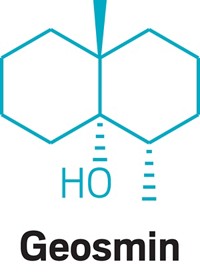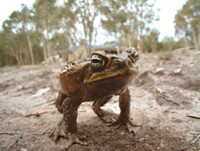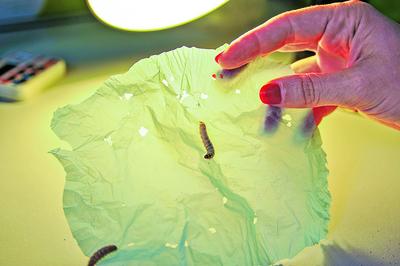Advertisement
Grab your lab coat. Let's get started
Welcome!
Welcome!
Create an account below to get 6 C&EN articles per month, receive newsletters and more - all free.
It seems this is your first time logging in online. Please enter the following information to continue.
As an ACS member you automatically get access to this site. All we need is few more details to create your reading experience.
Not you? Sign in with a different account.
Not you? Sign in with a different account.
ERROR 1
ERROR 1
ERROR 2
ERROR 2
ERROR 2
ERROR 2
ERROR 2
Password and Confirm password must match.
If you have an ACS member number, please enter it here so we can link this account to your membership. (optional)
ERROR 2
ACS values your privacy. By submitting your information, you are gaining access to C&EN and subscribing to our weekly newsletter. We use the information you provide to make your reading experience better, and we will never sell your data to third party members.
taxonomy
Waxworms take a liking to plastic shopping bags
Insect larvae that degrade polyethylene offer a potential way to process waste at recycling centers and landfills
by Stephen K. Ritter
May 1, 2017
| A version of this story appeared in
Volume 95, Issue 18
Polyethylene plastic shopping bags are extremely cheap and useful, but they’re also a source of widespread pollution. A team led by biologist Federica Bertocchini of Spain’s Institute of Biomedicine & Biotechnology of Cantabria has discovered a very hungry caterpillar that eats the plastic, a finding that could turn out to be a solution to this dilemma. A hobbyist beekeeper, Bertocchini noticed that waxworm caterpillars had hatched and emerged on the panels of one of her hives. The worms are the larvae of the wax moth Galleria mellonella, which is known to infest beehives. The caterpillars were feeding on beeswax—hence their name. When Bertocchini went to dispose of the waxworms in a polyethylene bag, which is chemically similar to the long alkyl chain compounds that make up beeswax, the waxworms quickly ate through the plastic and escaped. Investigating further, Bertocchini and her colleagues found that enzymes produced by the waxworm or by bacteria in their digestive tract depolymerize polyethylene to produce ethylene glycol (Curr. Biol. 2017, DOI: 10.1016/j.cub.2017.02.060). Researchers have previously found that related moth larvae can biodegrade polyethylene, beetle larvae known as mealworms can eat Styrofoam, and soil bacteria can munch on polyethylene terephthalate drink bottle plastic. Because waxworms are grown commercially to use as fish bait and to feed household pets such as birds and turtles, Bertocchini suggests they could be put to work eating plastic waste, possibly recovering useful amounts of ethylene glycol. Alternatively, she says the responsible enzymes could be mass produced and drizzled over plastic to degrade it, or the genes coding for the enzymes could be engineered into a bacterium applied to plastics.





Join the conversation
Contact the reporter
Submit a Letter to the Editor for publication
Engage with us on Twitter